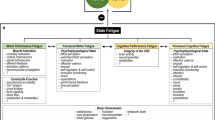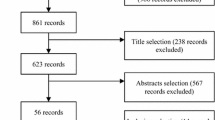Abstract
Variability in motor performance decreases with practice but is never entirely eliminated, due in part to inherent motor noise. The present study develops a method that quantifies how performers can shape their performance to minimize the effects of motor noise on the result of the movement. Adopting a statistical approach on sets of data, the method quantifies three components of variability (tolerance, noise, and covariation) as costs with respect to optimal performance. T-Cost quantifies how much the result could be improved if the location of the data were optimal, N-Cost compares actual results to results with optimal dispersion at the same location, and C-Cost represents how much improvement stands to be gained if the data covaried optimally. The TNC-Cost analysis is applied to examine the learning of a throwing task that participants practiced for 6 or 15 days. Using a virtual set-up, 15 participants threw a pendular projectile in a simulated concentric force field to hit a target. Two variables, angle and velocity at release, fully determined the projectile’s trajectory and thereby the accuracy of the throw. The task is redundant and the successful solutions define a nonlinear manifold. Analysis of experimental results indicated that all three components were present and that all three decreased across practice. Changes in T-Cost were considerable at the beginning of practice; C-Cost and N-Cost diminished more slowly, with N-Cost remaining the highest. These results showed that performance variability can be reduced by three routes: by tuning tolerance, covariation and noise in execution. We speculate that by exploiting T-Cost and C-Cost, participants minimize the effects of inevitable intrinsic noise.









Similar content being viewed by others
Notes
The words “result” and “result variable” are used as a general term to designate any measure that quantifies how satisfactorily a task was achieved, such as error, score, difference from target, or even a variability estimate if sets of data were evaluated for their result. In the present study we only consider one such measure: distance to target.
A manifold is a mathematical term from differential geometry generally referring to a collection or set of objects (James and James 1992, 5th ed.). The set of solutions in the skittles task is a smooth differentiable manifold whether or not the execution variables have different units. The interested reader can find definitions at any level of detail in relevant mathematical texts. For example, James and James (1992), 5th ed): “A topological manifold of dimension n is a topological space such that each point has a neighborhood which is homeomorphic to the interior of a sphere in Euclidean space of dimension n.” The term has received many qualifications, including connected or disconnected, compact or noncompact, etc.
The model with the two orthogonal springs is equivalent to one with a single spring rotating around a center pivot. However, both models are approximations as they do not include vertical elevation as is present in the real skittles task.
References
Beek PJ, van Santvoord AAM (1992) Learning the cascade juggle: a dynamical systems analysis. J Motor Behav 24(1):85–94
Bernstein N (1967) The coordination and regulation of movement. Pergamon Press, London
Bernstein N (1996) Dexterity and its development. In: Latash ML, Turvey MT (eds) Dexterity and its development. Human Kinetics, Champaign
Burton RM, Mpitsos GJ (1992) Event-dependent control of noise enhances learning in neural networks. Neural Netw 5:627–637
Churchland MM, Afshar A, Shenoy KV (2006) A central source of movement variability. Neuron 52:1085–1096
Craig JJ (1986) Introduction to robotics. Addison-Wesley, Reading
Cusumano JP, Cesari P (2006) Body-goal variability mapping in an aiming task. Biol Cybern 94(5):367–379
Duarte M, Zatsiorsky VM (1999) Patterns of center of pressure migration during prolonged unconstrained standing. Motor Control 3(1):12–27
Fitts PM (1954) The information capacity of the human motor system in controlling the amplitude of movement. J Exp Psychol 47:381–391
Fitts PM, Posner MI (1967) Human performance. Brooks/Cole, Belmont
Full RJ, Kubow T, Schmitt J, Holmes PJ, Koditschek DE (2002) Quantifying dynamic stability and maneuverability in legged locomotion. Integr Comp Biol 42:149–157
Geman S, Bienenstock E, Doursat R (1992) Neural networks and the bias/variance dilemma. Neural Comput 4:1–58
Harris CM, Wolpert DM (1998) Signal-dependent noise determines motor planning. Nature 394:780–784
Hasan Z (2005) The human motor control system’s response to mechanical perturbation: should it, can it, and does it ensure stability? J Motor Behav 37(6):484–493
Hu X, Sternad D (2007) Internal variability constrained to task-irrelevant directions in skill acquisition and control. Abstract in the 37th annual meeting of the society for neuroscience, San Diego, CA, 3–7 November
James RC, James G (1992) Mathematics dictionary. Chapman and Hall, New York
Jones KE, Hamilton AF, Wolpert DM (2001) Sources of signal-dependent noise during isometric force production. J Neurophysiol 88:1533–1544
Kudo K, Tsutsui S, Ishikura T, Ito T, Yamamoto Y (2000) Compensatory correlation of release parameters in a throwing task. J Motor Behav 32(4):337–345
Lashley KS (1930) Basic neural mechanisms in behavior. Psychol Rev 37(1):1–24
Latash ML, Scholz JF, Danion F, Schöner G (2001) Structure of motor variability in marginally redundant multifinger force production tasks. Exp Brain Res 141(2):153–165
Li′egeois A (1977) Automatic supervisory control of the configuration and behavior of multibody mechanisms. IEEE Trans Syst Man Cybern 7(12):868–871
Martin TA, Gregor BE, Norris NA, Thach WT (2001) Throwing accuracy in the vertical direction during prism adaptation: not simply timing of ball release. J Neurophysiol 85:2298–2302
Metropolis N, Rosenbluth AW, Rosenbluth MN, Teller AH, Teller E (1953) Equations of state calculations by fast computing machines. J Chem Phys 21(6):1087–1092
Müller H, Sternad D (2003) A randomization method for the calculation of covariation in multiple nonlinear relations: illustrated at the example of goal-directed movements. Biol Cybern 39:22–33
Müller H, Sternad D (2004a) Accuracy and variability in goal-oriented movements: decomposition of gender differences in children. J Hum Kinet 12:31–50
Müller H, Sternad D (2004b) Decomposition of variability in the execution of goal-oriented tasks—three components of skill improvement. J Exp Psychol Hum Percept Perform 30(1):212–233
Müller H, Sternad D (2008) Motor learning: changes in the structure of variability in a redundant task. In: Sternad D (ed) Progress in motor control—a multidisciplinary perspective. Springer, New York, pp 439–456
Müller H, Frank T, Sternad D (2007) Variability, covariation and invariance with respect to coordinate systems in motor control. J Exp Psychol Hum Percept Perform 33(1):250–255
Newell KM, McDonald PV (1992) Searching for solutions to the coordination function: learning as exploratory behavior. In: Stelmach GE, Requin J (eds) Tutorials in motor behavior II. Elsevier, Amsterdam, pp 517–532
Ölveczky BP, Andalman AS, Fee MS (2005) Vocal experimentation in the juvenile songbird requires a basal ganglia circuit. PLOS Biol 3(5):e153
Riccio GE (1993) Information in movement variability about the quantitative dynamics of posture and orientation. In: Newell KM, Corcos DM (eds) Variability and motor control. Human Kinetics, Champaign, pp 317–357
Russell S, Norvig P (2002) Artificial intelligence. Prentice Hall, New York
Schmidt RA, Zelaznik HN, Hawkins B, Frank JS, Quinn JT (1979) Motor-output variability: a theory for the accuracy of rapid motor acts. Psychol Rev 47(5):415–451
Scholz JP, Schöner G (1999) The uncontrolled manifold concept: identifying control variables for a functional task. Exp Brain Res 126:289–306
Scholz JP, Schöner G, Latash ML (2000) Identifying the control structure of multijoint coordination during pistol shooting. Exp Brain Res 135:382–404
Smeets JBJ, Louw S (2007) The contribution of covariation to skill improvement is an ambiguous measure. J Exp Psychol Hum Percept Perform 33(1):246–249
Sternad D, Wei K, Boonstra T (2008) Variability and stability in learning and adaptation of a rhythmic ball task. Neuroscience Abstracts, Washington, DC, 15–19 November
Stimpel E (1933) Der Wurf (On throwing). In: Krüger F, Klemm O (eds) Motorik (On motor control). Beck, München, pp 109–138
Trommershäuser J, Gepshtein S, Maloney LT, Landy MS, Banks MS (2005) Optimal compensation for changes in task-relevant movement variability. J Neurosci 25(31):7169–7178
Trommershäuser J, Maloney LT, Landy MS (2003) Statistical decision theory and trade-offs in the control of motor responses. Spat Vis 16(3–4):255–275
van Beers RJ, Haggard P, Wolpert DM (2004) The role of execution noise in movement variability. J Neurophysiol 91:1050–1063
Acknowledgments
This research was supported by grants from the National Science Foundation, BCS-0450218, the National Institutes of Health, R01 HD045639, and the Office of Naval Research, N00014-05-1-0844. We would like to express our thanks to Hermann Müller, Tjeerd Dijkstra and Neville Hogan for many insightful discussions and to Kunlin Wei for his help in creating the experimental set-up.
Author information
Authors and Affiliations
Corresponding author
Rights and permissions
About this article
Cite this article
Cohen, R.G., Sternad, D. Variability in motor learning: relocating, channeling and reducing noise. Exp Brain Res 193, 69–83 (2009). https://doi.org/10.1007/s00221-008-1596-1
Received:
Accepted:
Published:
Issue Date:
DOI: https://doi.org/10.1007/s00221-008-1596-1




